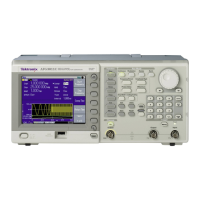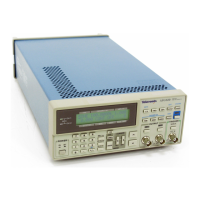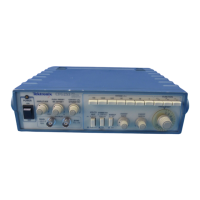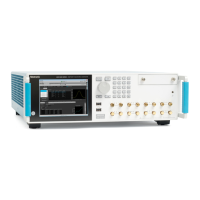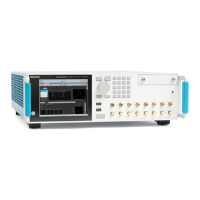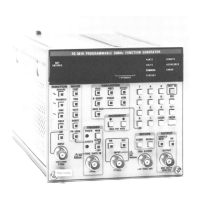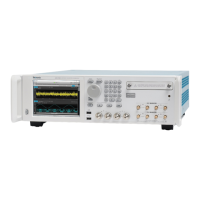DVG7 Digital Video Generator module remote commands
Returns the cur
rent audio click settings of a specific audio channel for the
selected outputs. The <n> in the command represents the output connector
type. "1" represents the SIGNAL connectors and "2" represents the optional
BLACK connectors. The <m> in the command represents the channel number
and you can use any channel number from 1 through 16.
:OUTPut<n>:EAUDio:GROup<m> :STATe ON|OFF
Turnsonorofftheoutputofaspecific audio group for the selected outputs.
You can also use 1 or 0 instead of ON or OFF. The <n> in the command
represents the output connector type. "1" represents the SIGNAL connectors
and "2" represents the optional BLACK connectors. The <m> in the
command r
epresents the group number and you can use any channel number
from 1 through 4.
:OUTPut
<n>:EAUDio:GROup<m>:STATe?
Returns the current output state of a specific audio group for the selected
output
s. The <n> in the command represents the output connector type. "1"
represents the SIGNAL connectors and "2" represents the optional BLACK
connectors. The <m> in the command represents the group number and you
can use any channel number from 1 through 4.
:OUTPut<n>:EAUDio:GROup<m> :PREemphasis OFF|CD|CCITt
Turns the preemphasis b its in the audio signal of a specificembeddedaudio
group for the selected outputs on or off. The signal itself does not have
preemphasis, but you can set the bits in order to check other equipment. The
<n> in the command represents the output connector type. "1" represents the
SIGNAL connectors and "2" represents the optional BLACK connectors.
Th
e <m> in the command represents the group number and you can use any
channel number from 1 through 4.
:
OUTPut<n>:EAUDio:GROup<m>:PR Eemphasis?
Returns the current preemphasis bits settings of a specificembeddedaudio
g
roup for the selected outputs. The <n> in the command represents the output
connector type. "1" represents the SIGNAL c o nnectors and "2" represents the
optional BLACK connectors. The <m> in the command represents the group
number and you c an use any channel number from 1 through 4.
:OUTPut<n>:EAUDio:GROup<m> :NBITs 20|24
Sets the sample b its of a specific e mbedded audio group for the selected
outputs. The <n> in the command represents the output connector type. "1"
represents the SIGNAL connectors and "2" represents the optional BLACK
connectors. The <m> in the command represents the group number and you
can use any channel number from 1 through 4.
:OUTPut<n>:EAUDio:GROup<m> :NBITs?
Draft
TG8000 Multiformat Test Signal Generator Programmer Manual 69
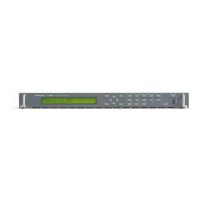
